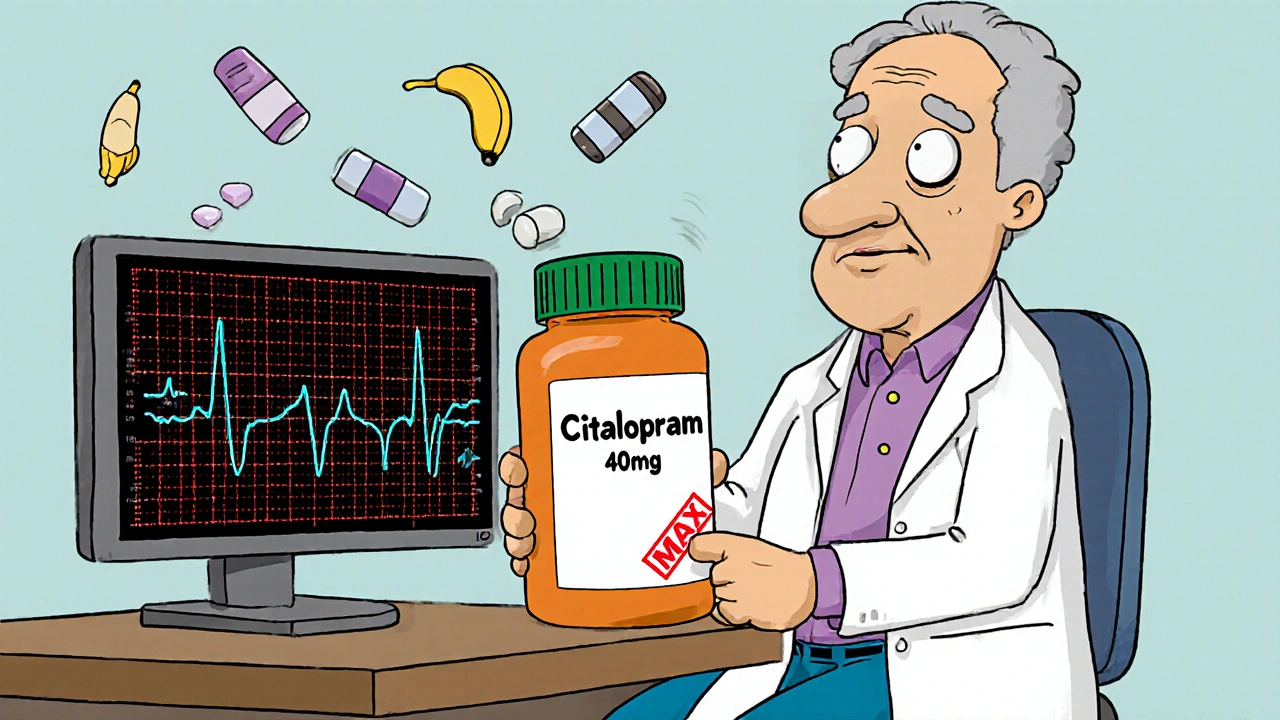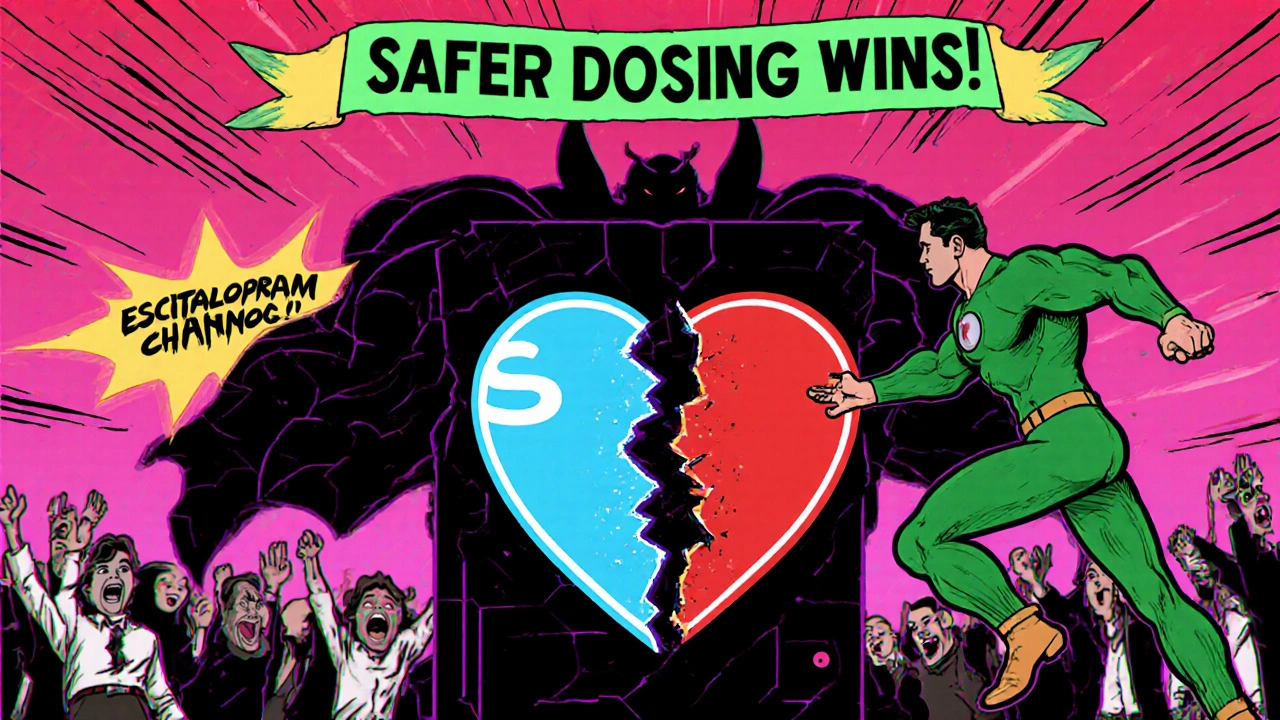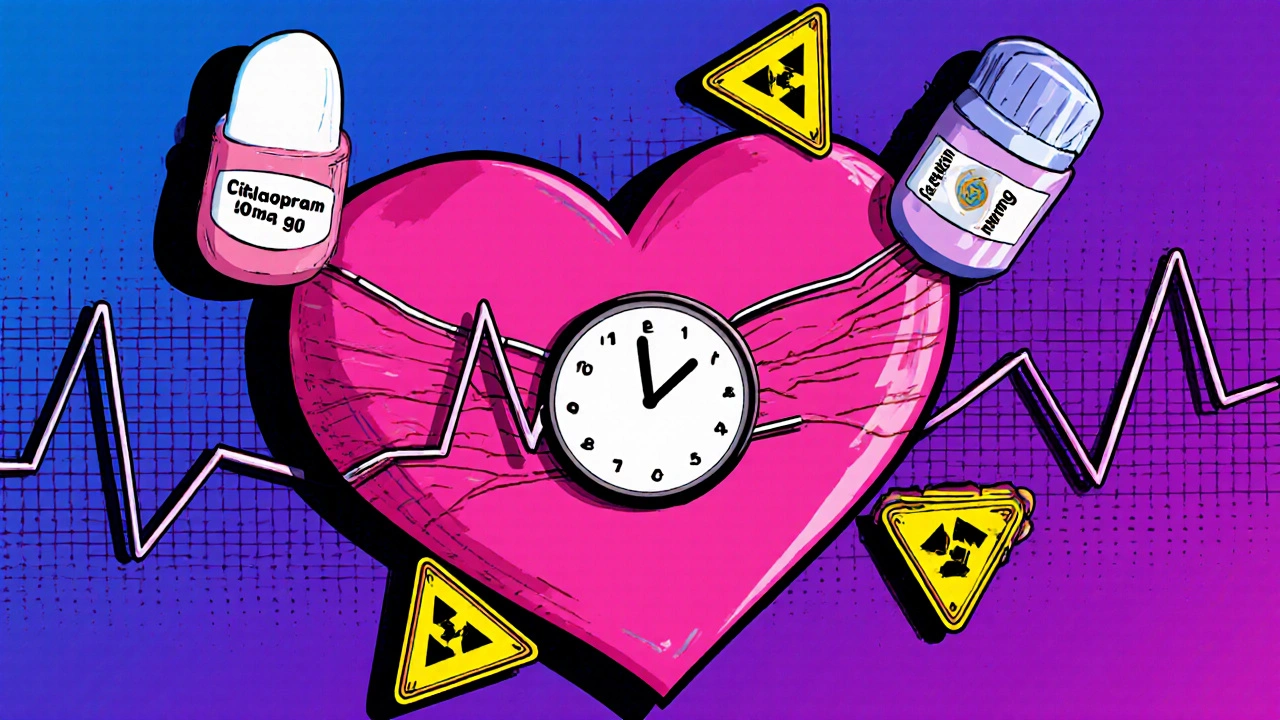QT Prolongation Risk Calculator
Dose Safety Checker
Check if your current dose of citalopram or escitalopram is within safe limits based on FDA/MHRA guidelines.
Why QT Prolongation Matters with Citalopram and Escitalopram
When you take an antidepressant, you’re not just treating sadness or anxiety-you’re changing how your heart beats. Citalopram and escitalopram, two commonly prescribed SSRIs, can stretch the QT interval on an ECG. That’s the time your heart takes to recharge between beats. When that interval gets too long, it can trigger a dangerous rhythm called Torsade de Pointes, which can lead to sudden cardiac arrest. This isn’t theoretical. In 2011, the FDA and UK’s MHRA issued urgent safety warnings after data showed clear, dose-linked risks. The message was simple: higher doses = higher risk.
How Much Do These Drugs Actually Prolong the QT Interval?
The numbers don’t lie. At 20mg daily, citalopram increases the QTc interval by about 8.5 milliseconds. At 40mg, that jumps to 12.6ms. At 60mg-a dose once commonly used-it adds nearly 19ms. For escitalopram, the effect is smaller but still real: 10mg adds 4.5ms, 20mg adds 6.6ms, and 30mg adds over 10ms. These aren’t random fluctuations. They’re consistent, measurable changes seen in controlled studies.
What’s clinically dangerous? An absolute QTc over 500ms, or a rise of 60ms from your baseline. Most people won’t hit those numbers on standard doses. But in older adults, those with kidney or liver problems, or those taking other QT-prolonging drugs, even small increases can push them into danger zone.
Why Citalopram Is Riskier Than Escitalopram
Citalopram is a mix of two mirror-image molecules (enantiomers). Only one of them-the S-enantiomer-is responsible for the antidepressant effect. Escitalopram is just that one molecule. That’s why you need half the dose of escitalopram to get the same mood benefit. But here’s the catch: the other half of citalopram-the R-enantiomer-doesn’t help depression, but it does block the same heart channel (hERG) that causes QT prolongation. So you’re getting the same antidepressant effect plus extra cardiac risk.
Studies show citalopram causes about twice the QT prolongation of escitalopram at equivalent antidepressant doses. That’s why many clinicians now choose escitalopram when cardiac risk is a concern-even if it costs more. The trade-off is worth it: better safety, same results.

Official Dose Limits You Must Know
After the 2011 safety reviews, regulators didn’t just issue warnings-they set hard limits:
- Citalopram: Max 20mg/day for patients over 65. Max 40mg/day for adults under 65. The 60mg dose was pulled from the market.
- Escitalopram: Max 10mg/day for patients over 65. Max 20mg/day for younger adults.
These aren’t suggestions. They’re rules. Prescribing above these limits now carries legal and clinical liability. The MHRA’s 2011 update made it clear: elderly patients metabolize these drugs slower. Their bodies hold onto more of the drug, increasing exposure and risk. That’s why the limits are stricter for older adults.
Who’s at Highest Risk?
Not everyone taking these drugs is in danger. But certain people need extra caution:
- Patients over 65
- Those with pre-existing long QT syndrome
- People with bradycardia (slow heart rate)
- Those who’ve had a recent heart attack
- Anyone taking other QT-prolonging drugs (like some antibiotics, antifungals, or antiarrhythmics)
- Patients with low potassium or magnesium levels
- People with liver disease-this slows drug clearance
If you’re on citalopram or escitalopram and have even one of these factors, your doctor should check your ECG before starting and again after reaching a stable dose. A simple 10-second test can catch problems before they become emergencies.
How Do Other Antidepressants Compare?
Not all antidepressants carry the same heart risk. Fluoxetine, sertraline, and paroxetine have minimal effect on QT interval. Venlafaxine (an SNRI) is mostly safe at normal doses but can be risky in overdose. Tricyclics like amitriptyline and maprotiline are worse than citalopram-especially at high doses. That’s why many doctors avoid them entirely in patients with heart concerns.
Escitalopram sits in a sweet spot: strong antidepressant effect, low cardiac risk, and fewer drug interactions than older options. It’s become the go-to SSRI for patients with cardiac history, especially in the UK and Europe where regulators took a more cautious approach than the US.

What Should You Do If You’re Already on One of These Drugs?
If you’re taking citalopram at 40mg or more, talk to your doctor. Don’t stop suddenly-you could get withdrawal symptoms. But ask: Is this dose necessary? Could escitalopram at 20mg do the same job with less risk? If you’re over 65 and on citalopram at 20mg or higher, your dose should be lowered.
Get an ECG if you haven’t had one in the last 6-12 months, especially if you’re on a higher dose or have other risk factors. Blood tests for potassium and magnesium are also wise. If your QTc is over 450ms (men) or 460ms (women), your doctor should reconsider your medication.
Is It Safe to Keep Taking These Medications?
Yes-for most people, they’re still safe. The risk of sudden cardiac events from these drugs is low. But low doesn’t mean zero. That’s why we now have clear rules: stick to the dose limits, screen for risk factors, and monitor when needed. The warnings didn’t make these drugs obsolete. They made them safer to use.
Doctors now prescribe them with more awareness. Patients are better informed. And thanks to those 2011 safety reviews, fewer people are being exposed to unnecessary risk. The goal isn’t to avoid these medications-it’s to use them wisely.
Final Takeaway: Safer Prescribing Is Possible
You don’t have to choose between treating depression and protecting your heart. With proper dosing and screening, citalopram and escitalopram remain effective tools. But you need to know the limits. Citalopram at 40mg is the ceiling. Escitalopram at 20mg is the max. For older adults, half those amounts. If you’re unsure, ask for an ECG. If you’re on another QT-prolonging drug, check for interactions. These aren’t scary drugs-they’re manageable ones. Just don’t ignore the numbers. Your heart is counting on it.

